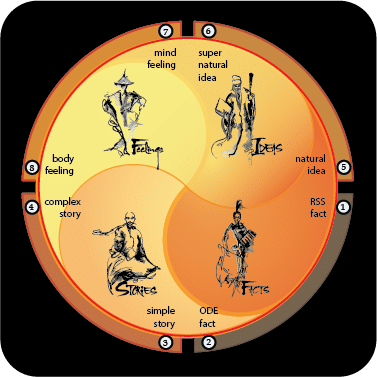Why are People with Asperger’s Syndrome Prone to Black-and-White Thinking?
To begin with, the phrase, “black and white thinking,” is pejorative. As used here, it implies, right from the start, that people on the spectrum are broken rather than different. This is similar to the way people in the 1950’s called African Americans, “darkies.” When called on doing this, most people would say they intended no harm.
Setting aside this possibly negative spin, we’re left with a rather confusing phrase. Does this phrase refer to a desire for clarity? A penchant for precision? A love of truth? Or is it yet one more allistic (not autistic) dog-whistle for those “poor folks on the spectrum?” Knowing how and whether to answer depends on knowing exactly how it’s being used.
If I allow that this question is being asked in order to bridge the differences between mainstream people and people with minority personalities, the simple truth is, all human beings communicate on a “spectrum of specificity.” In fact, for many years now, I have encouraged people on the spectrum (this includes me) and their family members to learn to use a knowledge of this spectrum of specificity (fussy words to fuzzy words) to enable them to meet in the middle. As opposed to teaching the “poor aspies” to imitate normal.
The basic idea here is simple.
All things exist on a spectrum. Knowing what something means requires you know the two aspects which create these spectrums. One, you must be able to name the pair of opposites which define the limits of a spectrum; the end points. Two, you must be able to experience the “thread of similarity” (the commonality) which joins these two points.
“Black” and “white” are the standard metaphor for the two end points. As used in the Tao symbol, they refer to the two sides of the mountain; the sunny side and the shadow side. Notable here is the idea that these two points are complementary. This means they each contain none of the other. Yet together, they define the entire scope of possibilities.
In addition, these two points are tipping-point based, making them easy to measure. When asked which side you’re on, you are either on the sunny side or the shadow side. Like the result of a coin toss then, as long as the coin lands, you can be 100% certain of the outcome. People with Asperger’s long for the coin to land. Allistic people are never taught the coin exists.
At this point in my diatribe, a more relevant example might help. A good one might be the thread of similarity, and the two end points, which define the Autism Spectrum itself.
The thread of similarity (what the two end points have in common)?
A level of personally internal distractions such that they impair one’s ability to interact with others.
The two end points?
On the Asperger’s autism end, these internal distractions are primarily mental (mainly unclear words). And on the Kanner’s autism end, these internal distractions are primarily physical (mostly unmastered sensations).
Is your head breaking? Are you ready to scream? If so, I do apologize. After all, I have Asperger’s and the study of human nature is my special interest. Moreover, it occurs to me, perhaps a drawing might help. Please note, this drawing does not refer to symptoms which would infer these folks are broken. Rather, it employs logical geometry (words placed in geometrically, symmetrical patterns) to scientifically define the true autism spectrum.
Finally, notice this spectrum contains four, not two, autisms: Kanner’s autism, OCD, Asperger’s autism, and ADHD.
